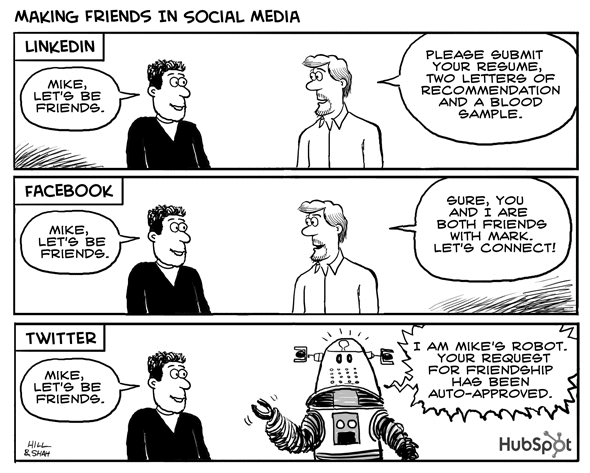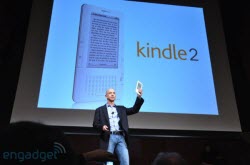
Last week's article predicted that Twitter is likely to be in your future. In this article I'm going to share some guidelines and the best tools I've found to make your Twitter use easier and more productive.
The number of third-party tools available for Twitter is one of the best indications that the service is destined to continue growing in functionality and popularity. I tried many things and settled on a few that work well. Hopefully that list will save you some time. It is at the bottom of this article.
Twitter 101: The Basics.
Twitter can be anything you want it to be. If you only want to follow a few friends and keep things very social, that's okay. On the other hand, if you want thousands of followers and the ability to drive traffic to your website, it's still okay.
I've come up with some basic guidelines that work well for me. I'll share some of them with you here.
First, you never have a second chance to make a first impression. So make a good first impression. That means choosing the right user-name and picture to support the image you want. It also means that you should fill-in your one-line bio in a way that makes people want to find-out more about you. Try to use the key words that will help people find you
using search (or choose to follow you when they look at your profile).
Second, Twitter is not e-mail, and you're never going to read all of it. This was hard for me because I'm used to starting at the beginning and ending at the end. I like that kind of structure. However as the number of people you follow grows … the stream of information becomes overwhelming. It helped me to think of it as a stream. That meant I didn't have to drink all of it, but it was there for me to dip my cup into anytime I wanted.
Third, Twitter doesn't limit your ability to follow people for the first 2,000 people. For most people that means that Twitter doesn't put any practical limit on them. However, after the first 2,000 followers, Twitter restricts your ability to follow additional users using a simple guideline … you are limited to a 10% extension of your followers. So if you have 3,000 followers, then Twitter will allow you to follow up to 3,300 people. With very few exceptions, that means that I un-follow someone if they don't follow me back. A lot of people follow that rule. This brings me to the fourth rule.
Fourth, you'll end up with a lot more followers if you follow people back. Tony
Robbins and Bill Gates can get by following a dozen people and still
have 100,000 people follow them. I suspect that you and I won't be able to do
the same thing. At first, I spent a lot of time deciding whether I was
going to follow a certain person. Over time, however, I started to set
the bar much lower. It simply took too much time to filter. So now, I
follow back almost everyone, but I'm very quick to un-follow someone
whose messages are too frequent or too distracting. This was simply a
more efficient way of dealing with the practical realities of using
Twitter.
Fifth, this is social media … be social. For every two or three posts, have at least one with a link to an interesting article not by you. Also, study a few of the stars, thought leaders, and examples of your target customer. Note that they have different behaviors. Then match and mirror relevant behavior (follower/followee ratio, number of posts with external links, etc.).
Hope that helps.
Here are the tools I use to make working with Twitter easier and more productive.
Browsers:
- TweetDeck: Very nice, full-featured Twitter browser application. I keep coming back to this.
- Twittelator Pro: Complete iPhone Twitter client. I tried them all, this was the best for me.
- Power Twitter: If you use Firefox, then try this add-on. It works very well.
Search:
- Twitter Search: See what's happening – right now.
- Twithority: Comprehensive and pretty Twitter search by rank, time, etc.
- Twilert: Receive e-mail updates of tweets containing your brand, name, or any keyword.
Stats:
- TwitterCounter: Great graph showing your Follower growth, top 100 lists, etc.
- TwInfluence: Measures the combined influence of a user and their followers.
- Twitalyzer: reports on relative influence, signal-to-noise ratio, generosity, velocity, & clout
- Twitter Friends: Lots of statistics about your Twitter behavior and contacts.
Looking for Trends:
- ReTweetist: Find the most popular items and people on Twitter.
- ReTweet Radar: Another trend-spotting service with Twitter word cloud.
Find and Manage Followers:
- Mr.Tweet: Very nice service that recommends followers and helps you connect with them.
- SocialToo: Reporting service shows who followed or un-followed you; lets you auto-follow back.
- Twitter Karma: Who do you follow but doesn't follow you back … and who aren't you following?
- Twollow: Auto-follow people on Twitter based on keyword matching in their posts.
Utilities:
- TwitterFeed: Easy way to send your blog's RSS feed to Twitter and other services.
- TweetBurner: Shorten & track URLs used in you posts (works with TweetDeck & Twitterfeed).
- TwitBacks: Custom Twitter background for your profile.
Finally, Here are some good posts to expand your Twitter horizons:
- Twitter in Plain English – a brief video answering the question Why? (Vimeo)
- Twitter Basics … and More! (James Dickey)
- Personal Branding with Twitter. Nice list of things to consider. (Sebastien Page)
- Finding the right Brand Voice on Twitter. Nice list to consider. (Mashable)
- Twitter Graphics for your "Follow-Me" Badge. (Sebastien Page)
- Twitter Background Images for your Profile Page. (Sebastien Page)
- Nice Twitter-related blog. (Twit Tips)









